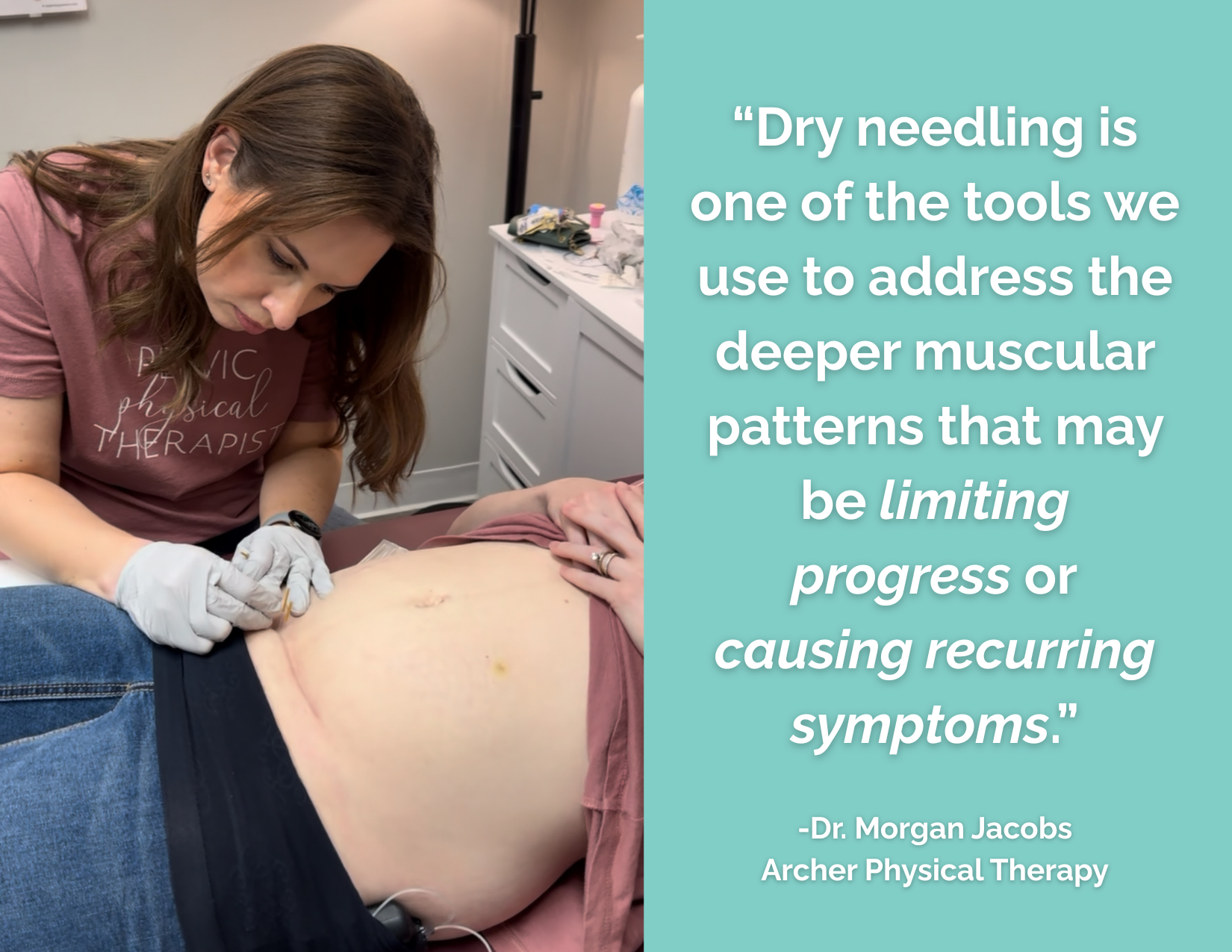Dry needling is a highly effective tool that physical therapists use to help improve muscle tone, reduce pain, and restore proper function. It is often mistaken for acupuncture because it uses similar needles; however, the purpose, methodology, and clinical application are very different.
Unlike acupuncture, dry needling targets specific muscles or trigger points related to musculoskeletal pain and dysfunction. A solid filament needle is inserted directly into the muscle—with or without electrical stimulation—to help reduce pain and improve neuromuscular function.
Dry needling is commonly used in orthopedic and sports rehabilitation, but it can also be an important technique in pelvic floor physical therapy.
Dr. Jenny Archer performing dry needling on cesarean scar at Archer PT in Nashville, TN
HOW DOES DRY NEEDLING WORK?
Dry needling helps restore healthy muscle performance in several ways:
1. Triggering a muscle twitch response
When the needle enters an irritated or tight muscle, it can cause a quick twitch or brief contraction.
This response helps:
Reset the muscle spindle
Restore normal length–tension relationships
Reduce excessive muscle tone
Improve mobility and comfort
2. Enhancing blood flow and nerve communication
Dry needling with electrical stimulation (e-stim) has been shown to:
Increase circulation
Improve nerve conduction
Decrease inflammation in the muscle
Reduce pain
Support faster recovery
These benefits make dry needling an effective treatment for many musculoskeletal conditions, including those related to pelvic health.
How Is Dry Needling Used in Pelvic Health Physical Therapy?
At Archer Physical Therapy, our pelvic health approach looks far beyond the pelvic floor itself. We assess how your core, spine, hips, glutes, and pelvic floor work together as a system. Often, pelvic floor symptoms are not caused by the pelvic muscles alone—multiple areas contribute to pain or dysfunction.
Dry needling is one of the tools we use to address the deeper muscular patterns that may be limiting progress or causing recurring symptoms.
Examples of how dry needling supports pelvic health:
Improving diastasis rectus abdominis (DRA) healing and deep core muscle engagement
Reducing low back pain, pelvic pain, and hip tightness
Improving pelvic floor muscle function for urinary, bowel, or pelvic pain conditions
Helping patients move past rehabilitation plateaus
Reducing recurring pelvic pain or tension by treating contributing muscles throughout the core and hips
Why Dry Needling Can Be Helpful for Pelvic Floor Dysfunction
In many cases, dry needling is a missing link that allows patients to finally activate the correct muscles, reduce protective tension, or break pain cycles. When combined with corrective exercises, manual therapy, and a whole-body approach, dry needling can significantly improve progress and long-term outcomes.
Dry needling is a safe, research-supported intervention used widely in pelvic health physical therapy, and many patients experience faster improvement when it is included as part of their personalized care plan!
By: Dr. Morgan Jacobs, PT, DPT, CAPP-Pelvic, CAPP-OB
Archer Physical Therapy


